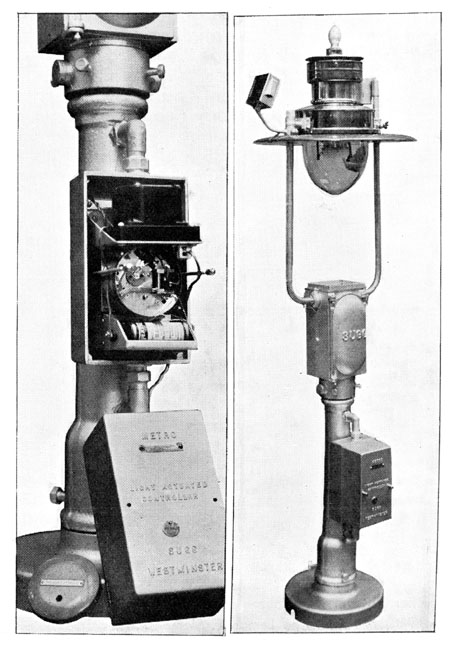 |
Gas Light And Coke

|
The Gas Light And Coke Company
84 Horesferry Road
SW1
London
|
Was the largest gas undertaking in the UK. - Public Lighting #3, 1936.
Sir Francis Goodenough was the manager of the sales department.
"He took a census of the company's district to gauge its possibilities, trained a
special body of salesmen, engaged women experts in domestic science to demonstrate the
use of gas appliances, and advertised the company's service in the newspapers. In consquence,
many other gas undertakings and gas appliance makers benefited from the company's advertising.
Some actually offered to bear part of the cost. This suggested the idea that a national scheme
of advertising might be floated, with contributions from gas undertakings and makers of
appliances all over the country. In the discussion which followed, it became clear that
there was need for a strong central body to co-ordinate other activities besides direct
advertising. The result was the formation of the British Commercial
Gas Association" - Public Lighting #3, 1936.
Founded in 1812. By 1937, was responsible for the lighting of over 60 miles of streets
in London. - Public Lighting #7, 1937.
Modified a photo electric cell for lighting street lamps between dusk and dawn. A recitified photo-electric caell is fixed
in a suitable position on the lamp and is connected with the main control box. The components in the box
include an electric relay, a 3-volt dry cell and a clockwork operated gas valve which incorportes a
switching device. When daylight falls below a pre-determined value, the current from the photo-electric
cell operates the relay, which allows a small current to flow from the dry-cell to energise an electro-magnet,
which operates the trip mechanism on the clockwork gas valve, which then turns to the "on" position
and lights the lamps. A similar operation occurs when the value of daylight increases to a pre-fixed
value and the lamp is extingushed.

It can be used for refuge islands with centre lamp; and for all lamps
and signs on a roundabout. It is possible with Comet ignition to light all lamps up simultaneously.
The only attention required is the winding of the clockwork mechanism - about once every three weeks -
and the renewal of the battery - not more than once per year. The control was patented by
Mr. W. H. B. Hall, Mr. R. H. Whillock and the South Metropolitan Gas Company originally
for use in schools. It was developed by Sugg for street lighting in conjunction with
the Public Lighting Section of The Gas Light & Coke Company - Public Lighting #11, 1938
Designed an automatic cut-off valve for illuminated guide posts and road signs in the late 1930s. This was fitted
to all their guard posts in their area. The device was manufactured by Sugg. - Public Lighting By Gas In Small Towns, 1938.
The possibility of an escape of gas igniting if a gas-illuminated bollard is knocked over was looked at
by the Public Lighting Section of the The Gas Light & Coke Company. They
devised an automatic cut-off valve which is being manufacturered by Sugg.
The valve is fixed to the service in the base of the bollard, preferably below ground level, and the
supply to the burner is conencted to it by means of an easily broken nipple, which ensures the valve
not being broken away from the service if the bollard is knocked down. The device itself is
diaphragm operated, the inlet gas passing to the underside of the diaphragm and thence through a valve to
the burner. The effective area of the valve is small in relation to that of the diaphragm. Pressure at
the burner is conveyed to the upper side of the diaphragm by a small bore tube, and under ordinary
conditions, with almost equal pressure both above and below, the valve is kept open by its own weight.
Immediate fracture of either the main supply or the small bore tube, the pressure above the diaphragm
is reduced to atmospheric, and the inlet pressure snaps the valve shut and keeps it in this position
until pressure is again applied above the diaphragm by means of reconnection. Owning to the success of
this device, it is now being fitted to all gas lighted bollards and guardposts. - Public Lighting #11, 1938
- External Links:
- Grace's Guide
|



